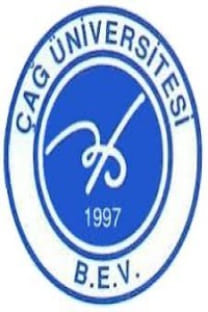Teknoparkların Özümseme Kapasitesine Etkisive Bu Süreçte Gatekeeperların ( Kapı görevlilerinin) Rolü
: Teknopark, Özümseme Kapasitesi, Kapı Görevlisi
THE EFFECTS OF TECHNOPARKS ON ABSORPTIVE CAPACITY AND THE ROLE OF GATEKEEPERS IN THIS PROCESS
Technopark, Absorptive capacity, Gatekeeper,
___
- Andrewina, L. Govindaraju, R. Samadh, A. Sudirman (2008). I. The Effect of Interorganizational Relationship on Knowledge Sharing Capability and Absorptive Capacity, Proceedings of the 9th Asia Pasific Industrial Engineering& Management Systems Conference, Indonesia, 837-848.
- Armbruster, H. Bikfalvi, A. Kinkel, S. Lay, G. (2008). “Organizational Innovation: The Challenge of Measuring NonTechnical Innovation in Large-Scale Surveys”, Technovation, 28, 644-657.
- Ashekele, H.M., Matengu, K. (2008). Success factor in technology transfer to SME's: Rundu Woodwork Common Facility Center, Proceedings of PICMET 2008, 27-31 July, Cape Town, South Africa.
- Autant-Bernard, C. Chalaye, S. Manca, F. Moreno, R. Suriñach, J. (2010). Measuring the adoption of innovation. A typology of EU countries based on the Innovation Survey. Innovation, The European Journal of Social Science Research. 23(3), 199-222.
- Bellavista, J., & Sanz, L. (2009). Science and technology parks: habitats of innovation: introduction to special section. Science and Public Policy, 36(7), 499-510.
- Chesbrough, H. W., & Garman, A. R. (2009). How open innovation can help you cope in lean times. Harvard business review, 87(12), 68-76.
- Chesbrough, H. (2004). Managing open innovation. Research-Technology Management, 47(1), 23-26.
- Chesbrough, H. W. (2006). The era of open innovation. Managing innovation and change, 127(3), 34-41.
- Flatten, T. C., Engelen, A., Zahra, S. A., & Brettel, M. (2011). A measure of absorptive capacity: Scale development and validation. European Management Journal, 29(2), 98-116.
- Ivarsson, M., & Gorschek, T. (2009). Technology transfer decision support in requirements engineering research: a systematic review of REj. Requirements engineering, 14(3), 155-175.
- Löfsten, H., & Lindelöf, P. (2002). Science Parks and the growth of new technology-based firms—academic-industry links, innovation and markets. Research policy, 31(6), 859-876.
- Lundquist, G. (2003). A rich vision of technology transfer technology value management. The Journal of Technology Transfer, 28(3-4), 265-284.
- Monck. C. S. P., Porter, R. B., Quintas, P. Storey, D. Wynarczyk, P.(1988). Science Parks and the Growth of High Technology Firms. London: Routledge.
- Norman, DA. Verganti, R. (2014). Incremental and Radical Innovation: Design Research vs. Technology and Meaning Change. Design Issues, 30(1), 78-96.
- Ramirez, M. Dickenson, P. (2010). Gatekeepers, Knowledge Brokers and Inter-Firm Knowledge Transfer in Beijing’s Zhongguancun Science Park, International Journal of Innovation Management, 14(01), 93- 122.
- Shane, SA. (2004). Academic Entrepreneurship: University Spinoffs and Wealth Creation, Edward Elgar Publishing, 352.
- Simonin, B. (2004). An Empirical Investigation of the Process of Knowledge Transfer in International Strategic Alliance, Journal of International Business Studies, 35(5), 407-427.
- Van Burg, E., Romme, A.G.L., Gilsing, V.A. and Reymen, I.M.M.J. (2008), Creating University Spinoffs: A Science-Based Design Perspective. Journal of Product Innovation Management, 25(2), 114-128.
- Vrande, V. Jong, J. Vanhaverbeke, W. Rochemony, M. (2009). “Open Innovation in SMEs: Trends, Motives and Management Challenges”. Technovation, 29(6), 423-437.
- Zhang, Y. (2005). The Science Park Phenomenon: Development, Evolution and Typology. International Journal Entrepreneurship and Innovation Management, 5(1-2), 138-154.
- ISSN: 1304-8392
- Yayın Aralığı: Yılda 2 Sayı
- Başlangıç: 2004
- Yayıncı: Çağ Üniversitesi
Teknoparkların Özümseme Kapasitesine Etkisive Bu Süreçte Gatekeeperların ( Kapı görevlilerinin) Rolü
Murat GÜLMEZ, Saadet SAĞTAŞ, Diler Yaman KAHYAOĞLU
YAPISAL EŞİTLİK MODELLEMESİ KAPSAMINDA FORMATİF VE REFLEKTİF ÖLÇÜM
Teknoparkların Özümseme Kapasitesine Etkisive Bu Süreçte Gatekeeperların ( Kapı görevlilerinin) Rolü
Murat GÜLMEZ, Saadet SAĞTAŞ, Diler Yaman KAHYAOĞLU
Toplum Temelli Turizm Projelerinde Katılım ve Paylaşım: Misi Köyü Örneği
Sıla KARACAOĞLU, Medet YOLAL, Kemal BİRDİR
Toplum Temelli Turizm Projelerinde Katılım ve Paylaşım: Misi Köyü Örneği
Sıla KARACAOĞLU, Medet YOLAL, Kemal BİRDİR
MAKEDONYA VE KOSOVA TÜRK AĞIZLARINDA ARKAİK ÖZELLİKLER
